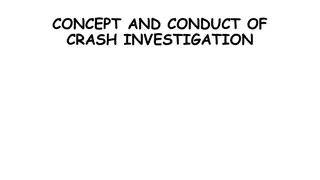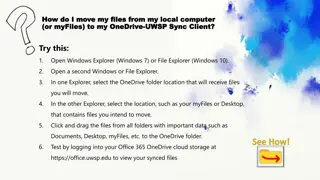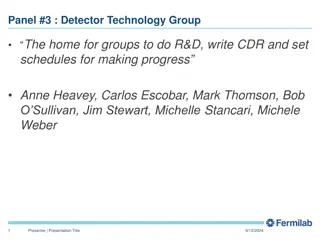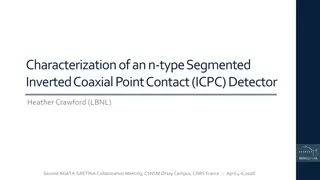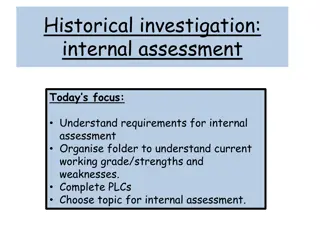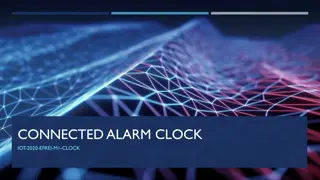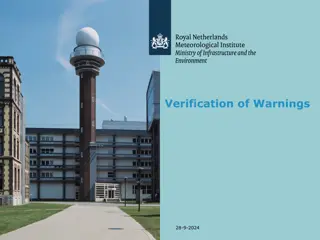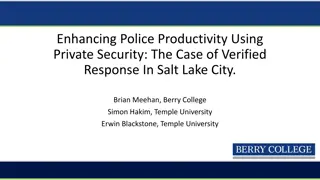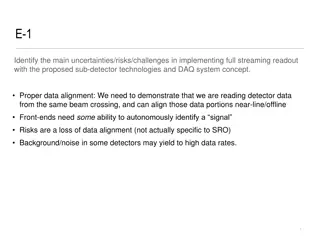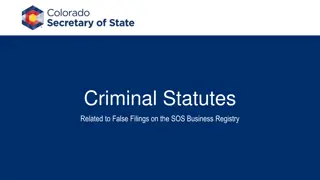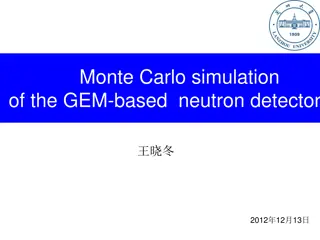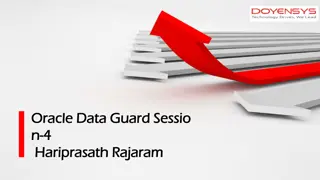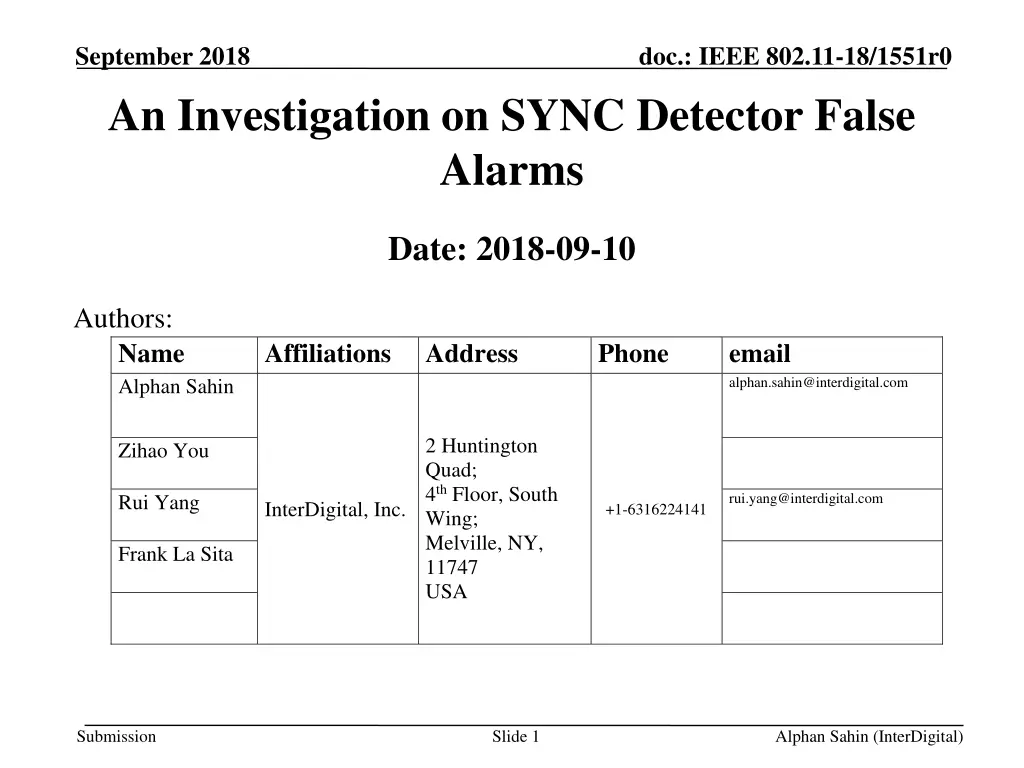
Investigation on SYNC Detector False Alarms in IEEE 802.11-18/1551r0
Explore the study on SYNC detector false alarms in IEEE 802.11-18/1551r0 focusing on the correlation between WUR payload and SYNC, alternative SYNC detector designs, threshold selection impact, and simulation results for HDR data to address high SNR false alarms effectively.
Download Presentation

Please find below an Image/Link to download the presentation.
The content on the website is provided AS IS for your information and personal use only. It may not be sold, licensed, or shared on other websites without obtaining consent from the author. If you encounter any issues during the download, it is possible that the publisher has removed the file from their server.
You are allowed to download the files provided on this website for personal or commercial use, subject to the condition that they are used lawfully. All files are the property of their respective owners.
The content on the website is provided AS IS for your information and personal use only. It may not be sold, licensed, or shared on other websites without obtaining consent from the author.
E N D
Presentation Transcript
September 2018 An Investigation on SYNC Detector False Alarms doc.: IEEE 802.11-18/1551r0 Date: 2018-09-10 Authors: Name Alphan Sahin Affiliations Address Phone email alphan.sahin@interdigital.com 2 Huntington Quad; 4th Floor, South Wing; Melville, NY, 11747 USA Zihao You rui.yang@interdigital.com Rui Yang +1-6316224141 InterDigital, Inc. Frank La Sita Submission Slide 1 Alphan Sahin (InterDigital)
September 2018 doc.: IEEE 802.11-18/1551r0 Introduction In [1], the responses of the HDR and LDR SYNC detectors to the HDR and LDR data fields have been studied: It was shown that, the correlation between the WUR payload and SYNC can be high, which may create a false alarm in some WURx implementations In this study, we discuss an alternative SYNC detector to lower the false alarm rate while maintaining the same miss detection e.g., WURx wakes up RX window Data Legacy SYNC TX: Slide SYNC detection False alarms? SYNC templates (HDR/LDR) Submission Slide 2 Alphan Sahin (InterDigital)
September 2018 doc.: IEEE 802.11-18/1551r0 SYNC Detector In [1], the SYNC detector compares the ratio of the correlation output (?) and the sum samples (?) with a threshold between 0 and 1 e.g., WURx wakes up RX window TX: Legacy SYNC Data Slide Sum of abs samples ? False alarms due to the high correlation? x/y threshold? Correlate SYNC templates (HDR/LDR) ? Submission Slide 3 Alphan Sahin (InterDigital)
September 2018 doc.: IEEE 802.11-18/1551r0 Threshold Selection If the threshold is set based on the statistics of the maximum of the detector output within a period for AWGN (e.g., 0.1-0.3), it has been observed that the false alarm rate is 100% for high SNR [1] A higher threshold can increase the miss detection rate. This issue can be addressed by using a different detector design Threshold 100% false alarm! Submission Slide 4 Alphan Sahin (InterDigital)
September 2018 doc.: IEEE 802.11-18/1551r0 An Alternative SYNC Detector An alternative SYNC detector may estimate the noise floor (arising due to the WUR payload) by getting ? taps separated by ? ?? from the output of correlator (e.g., ? = 15,? = 0.8 ??) and compare it with the correlator output If the SYNC is detected, LDR and HDR can be differentiated by checking the sign of correlator output e.g., WURx wakes up Legacy SYNC Signal ? ?2 ? ?? ?1 ? ?? ? SYNC template Correlate ? Mean( 2) x/y th ? 2 Submission Slide 5 Alphan Sahin (InterDigital)
September 2018 doc.: IEEE 802.11-18/1551r0 Simulation Results (HDR) When the alternative SYNC detector (i.e., detector 2) is employed, the false alarm rate issue is remedied significantly For HDR data, there is a trade-off between miss detection and false alarm rate as a function of the threshold ?1= ?2= 15 and ? = 0.8?s Submission Slide 6 Alphan Sahin (InterDigital)
September 2018 doc.: IEEE 802.11-18/1551r0 Simulation Results (LDR) Since ? = 0.8 ?? and the ON duration for LDR (i.e, 4 ??) is larger than ON duration for SYNC field (i.e., 2 ??), the detector calculates ? with the correlated samples and the false alarm rate decreases as a function of the threshold for LDR data ?1= ?2= 15 and ? = 0.8?s Submission Slide 7 Alphan Sahin (InterDigital)
September 2018 doc.: IEEE 802.11-18/1551r0 Conclusion In this study, we show that a SYNC detector which takes the noise floor into account can handle false alarm rate issues (i.e., detection of HDR and LDR data fields as SYNC field) without degrading the missed detection rate Submission Slide 8 Alphan Sahin (InterDigital)
September 2018 doc.: IEEE 802.11-18/1551r0 References [1] S. Shellhammer and B. Tian, Concerns about Sync Detector False Alarms IEEE 802.11-18/1201r0, Jul. 2018 Submission Slide 9 Alphan Sahin (InterDigital)

